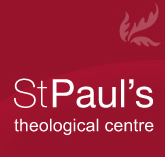Bauckham’s Jesus and the Eyewitnesses - Part 20
 Click here for the (continually updated) series outline.
Click here for the (continually updated) series outline.Chapter 11. Transmitting the Jesus Traditions
It will be remembered that Bauckham reserved little criticism in the previous chapter for Gerhardsson’s model. The next two chapters analyses the nature of ‘the transmission process of the Jesus traditions as a formal controlled tradition in which the eyewitnesses played an important part’ (264). To do this, he first turns attention to the evidence in the Pauline literature (though he notes that the evidence is not particular to Paul). Paul used technical terminology for handing on a tradition which would have involved some sort of ‘teaching and learning so that what is communicated will be retained’ (265). Noticeably, when Paul speaks of traditions, ‘he makes clear that his authority for transmitting at least some of them to his churches was not his apostolic status as such, but the fact that he himself had received them from competent authorities (1 Cor 15:3)’ (265). This indicates that Paul understood ‘a chain of transmission that begins from Jesus himself and passes through intermediaries to Paul himself, who has already passed it on to the Corinthians when he first established their church’ (268).
Paul, Bauckham argues, received (by a formal process of learning) the traditions from the Twelve. This claim naturally involves an explanation as to why Gal 1:11-12 and 1 Cor 11:23 (‘from the Lord’) are not inconsistent with this proposal. In passing traditions on to the churches (presumably also by a formal process of learning), while there is no mention of the transmission of tradition to specific individuals (cf. 1 Cor 11:2; 15:2 etc.), it is clear that certain persons were designated as teachers (e.g. Rom 12:7; 1 Cor 12:28-29). This picture is then substantiated with reference to evidence in Josephus concerning the Pharisaic transmission of tradition both to people generally and to specific teachers.

‘Thus, even within the Pauline communities, we should reckon with the role of specially authorized guarantors of the traditions, and thus a more formal process of preservation and transmission of the traditions than Bailey’s model envisages’ (270)Drawing on the work of Jan Vansina, Bauckham notes that oral societies treat fictional historical tales and historical accounts differently such that the latter is preserved more faithfully. This leads, again building on Vansina’s work, to a powerful critique of the form critical claim that the early Christians didn’t distinguish between past and present. These Christian certainly did make such a distinction as is clear in i) the varied usage of the ‘son of man’ title in both the Jesus traditions on the one hand, and the early church on the other, ii) the expectations associated with of the genre of ‘biography’ with which the Gospels are to be associated, and iii) the obvious religious significance of the past: ‘The present in which they lived in relationship with the risen and exalted Christ was the effect of this past history, presupposing its pastness and not at all dissolving it’ (277-78).
Bauckham then maintains, again with a sympathetic ear to Gerhardsson, that Jesus tradition, in contrast with the form-critical picture, was transmitted ‘independently of its use’ (278), the Sitz im Leben of a tradition being the transmission processes itself. This is supported by the evidence analysed in Paul above, but also in the clear distinction Paul made between the sayings of Jesus and his own teaching concerning divorce in 1 Cor 7. Naturally Bauckham is not asserting that ‘the Jesus traditions as we know them from the Gospels in no way reflect the context of the early Christian movement’. But later changes were moderate. Indeed, ‘[t]he Gospels themselves would be hard to explain unless the oral Jesus traditions before them were transmitted for their own sake ... The disciples do not supplement Jesus’ teaching with contributions - adding or interpreting - in their own name’ (279).
Bauckham ends the chapter with a discussion of two types of controls that could have played a part in the transmission of traditions, namely memorisation and writing. Not only was memorisation ‘universal in education in the ancient world’ (280), but (here citing my neighbour Rainer Riesner) ‘the form of the sayings of Jesus included in itself an imperative to remember them’ (282). In critical dialogue with Werner Kelber, Bauckham maintains that different types of material were remembered in different ways, and the only way to know how Jesus traditions were treated is to analyse the Gospel evidence itself. This leads to the conclusion that ‘Jesus must have expected his sayings to be deliberately learned’ (284). Furthermore, again relying to an extent on Riesner, ‘the strong tradition within the Gospels that Jesus sent out his disciples to spread his own message during his ministry’ is evidence that ‘Jesus expected his disciples to transmit his teaching to others’ (284).
The main critique of Gerhardsson’s position has been that it doesn’t account for variations in the Jesus tradition, as some claim Bailey’s model does. However, variations in the tradition can be explained on other grounds (Bauckham provides five potential reasons, though doesn’t attempt to justify them in any detail – i.e. there is a doctorate waiting to be written here!).
Finally, Bauckham asks if writing was a way used to control the transmission of tradition. In relation to this, he asserts:
‘The first Christians ... included people who studied the Scriptures with current exegetical skills and could write works with the literary quality of the letter of James’ (289).Hence, ‘it does seem unlikely that no one would have even noted down Jesus traditions in notebooks’ (289), but this wouldn’t have replaced but rather complimented orality and memorisation.
I personally found this chapter profoundly convincing.
Labels: Book Review, Jesus and the Eyewitnesses








0 Comments:
Post a Comment
<< Home